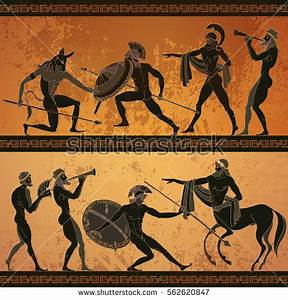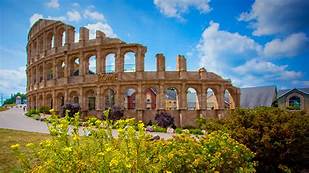GREEK MYTHOLOGY PROJECT
For this project you will need to begin by researching a specific god or goddess. This will be your choice, but you will not have the same one as anyone else in the class.
|
1. Zeus
2. Hera 3. Demeter 4. Poseidon 5. Hades 6. Persephone 7. Hermes 8. Hephaestus 9. Ares 10. Athena 11. Apollo 12. Artemis 13. Dionysus 14. Aphrodite 15. Prometheus & Epimetheus 16. Uranus & Gaia/ Cronus & Rhea / Zeus & Hera: Titans vs. Olympians [overview on genealogy, patterns, etc.] 17. The Cyclops 18. Nine Muses 19. Eros, Hebe, Iris 20. Lesser Sea Gods: Triton, Proteus, Ocean, & Naiads 21. Satyrs, Sileni, & Centaurs [NB: Pan, Silenus] 22. The Three Fates (Clotho, Lachesis, & Atropos) & the Sirens 23. The Gorgans and the Graiae 24. Nymphs: Oreads, Dryads, Hamadryads, Nereids 25. Roman Lesser Gods: Vesta/Hestia, Janus, Saturn, Lares and Penates |
YOUR TASK: Teach your mythological character(s) to the class!
Create a handout (to be copied) on 8.5” x 11” paper of your god that teaches your classmates the most important features of your mythological character.
DO NOT PLAGIARIZE; always use your own words!
Your poster/handout must include the following:
1. Title. The name of the god or goddess should be larger than the rest of the text. Please provide both the Greek and Roman names where
applicable.
2. Graphic. A picture of your god/goddess/character(s). This may be from a book, the Internet, or your own interpretation. Please make sure it is
legible and fits the description given in mythology. Double check your art.
3. Story. In your own words, retell at least ONE myth about your god/goddess/character(s). Read several myths about this god/goddess/character(s)
and choose the most revealing tale to present. Please bring the original myth with you to class! We may need to refer to it.
4. Background. Provide a history about the god/goddess/character(s). For example, you should know who his/her/their parents are, whether he/she
is married, where he/she is from, etc. Indicate notable births, famous family, etc. Again, you will have to read several myths to gain a decent
understanding.
5. Symbols. With what object(s) and/or animals is this god/goddess/character associated?
6. Power. What his/her/their powers and responsibilities, special skills, talents, traits are.
7. Flaws. What are his/her/their weaknesses? Are there areas that may cause him/her/them trouble?
8. Presentation. You should be prepared to answer questions from your classmates about this god or goddess. As each person in the class
presents, you will be expected to take notes. There will be a quiz on the material, so listen carefully and ask questions!
Create a handout (to be copied) on 8.5” x 11” paper of your god that teaches your classmates the most important features of your mythological character.
DO NOT PLAGIARIZE; always use your own words!
Your poster/handout must include the following:
1. Title. The name of the god or goddess should be larger than the rest of the text. Please provide both the Greek and Roman names where
applicable.
2. Graphic. A picture of your god/goddess/character(s). This may be from a book, the Internet, or your own interpretation. Please make sure it is
legible and fits the description given in mythology. Double check your art.
3. Story. In your own words, retell at least ONE myth about your god/goddess/character(s). Read several myths about this god/goddess/character(s)
and choose the most revealing tale to present. Please bring the original myth with you to class! We may need to refer to it.
4. Background. Provide a history about the god/goddess/character(s). For example, you should know who his/her/their parents are, whether he/she
is married, where he/she is from, etc. Indicate notable births, famous family, etc. Again, you will have to read several myths to gain a decent
understanding.
5. Symbols. With what object(s) and/or animals is this god/goddess/character associated?
6. Power. What his/her/their powers and responsibilities, special skills, talents, traits are.
7. Flaws. What are his/her/their weaknesses? Are there areas that may cause him/her/them trouble?
8. Presentation. You should be prepared to answer questions from your classmates about this god or goddess. As each person in the class
presents, you will be expected to take notes. There will be a quiz on the material, so listen carefully and ask questions!




